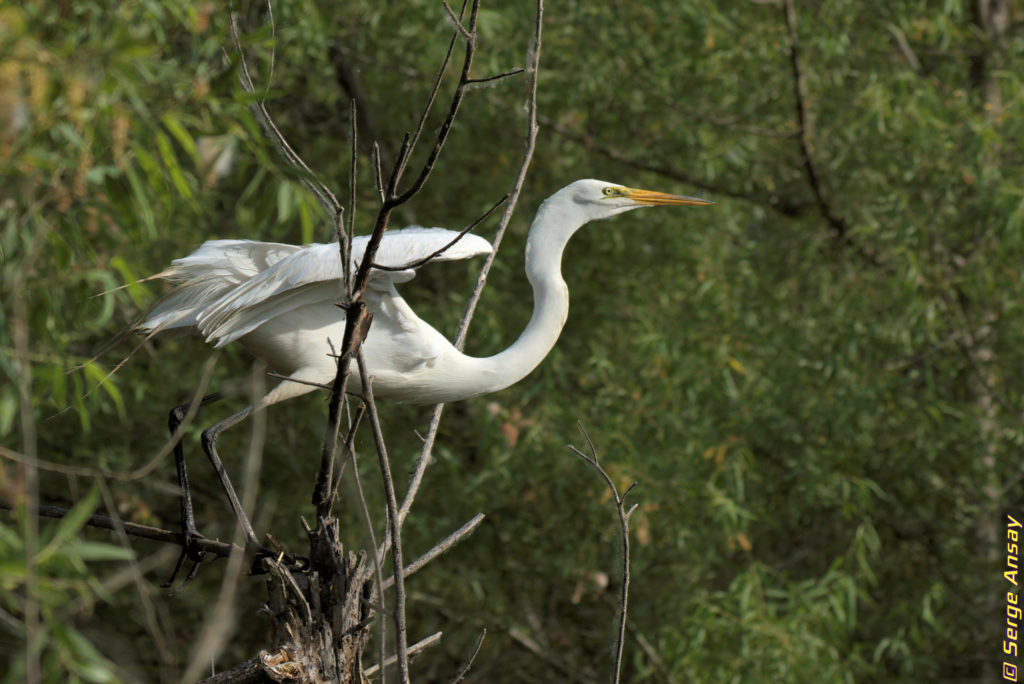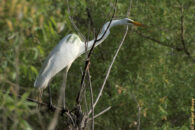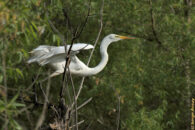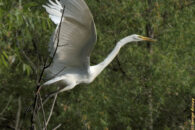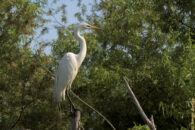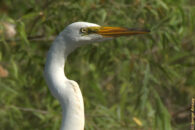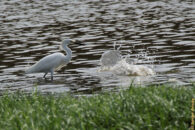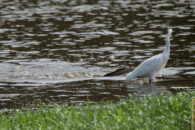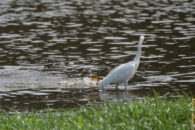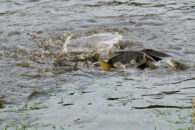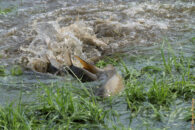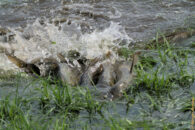I have seen a lot of things at Lake Hodges, but last month was marked by a strange event. Well, it might not be so strange for people who know the wildlife better than I do. But I have never seen it and was quite surprised by what I saw.
Originally, I thought of going straight to that matter in the photos gallery. But then I also was able to get quite close to a great egret before that, and got some of my best shots of that rather elegant bird. So they will have to go first. Then the snowy egret and carps session. Enjoy!! 😀
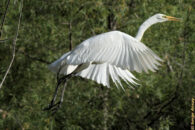
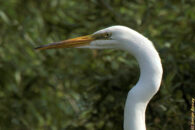
I already talked a bit about the great egret in this November 2020 post.
But a quick review showed that I didn’t tell you much. So, here we go:
- The great egret is commonly confused with the white egret.
- This bird has an average lifespan of 15 years
- This is a solitary kind of bird but they will live in a colony during breeding season.
- Also, during that time, the skin below the eyes turns a lime-yellow and the bill changes to a yellowish-orange.
- The female can lay 1 to 6 eggs
- Both male and female will brood for 3 to 4 weeks before the eggs hatch.
- The chicks often exhibit strong siblings rivalry, might even go as far as stabbing one another to death with their long sharp beak. (hugh… I guess human kids aren’t that bad after all ;-p)
- And finally, this bird is the symbol of the Audubon society:
The Audubon society is an organization dedicated to the protection of the birds, which was started due to “… Outrage over the slaughter of millions of waterbirds, particularly egrets and other waders, for the millinery trade” (millinery: articles, especially women’s hats, sold by a milliner)
And about that, look at this grim statement found in the National Park Service web site: ” More than 300 Great Egrets were required to yield just one kilogram of feathers.”
Anyway, here is the Audubon society mission statement:
“The National Audubon Society protects birds and the places they need, today and tomorrow, throughout the Americas using science, advocacy, education, and on-the-ground conservation.”
